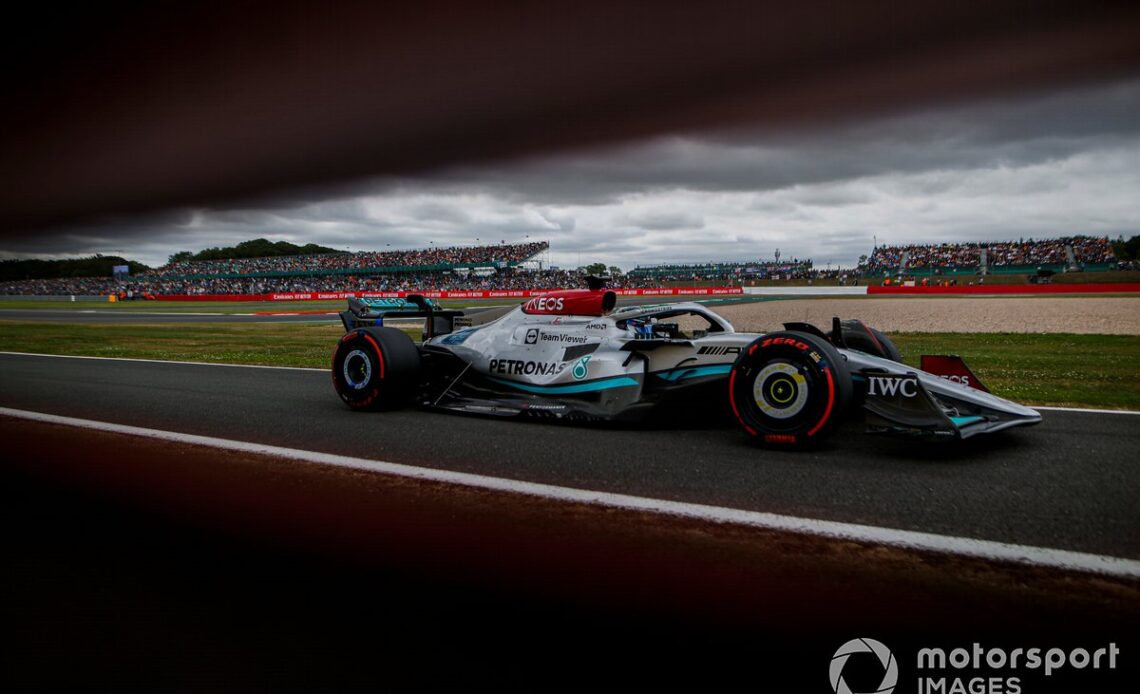The FIA has stepped in to try to minimise cars bouncing after drivers expressed concerns about their safety, with them being subjected to heavy impacts inside of the cockpits.
As part of its efforts, the governing body is to introduce an Aerodynamic Oscillation Metric (AOM) from the French Grand Prix that limits the vertical forces cars are allowed to operate with.
Teams can risk exclusion from an event if they consistently break the limit, but will be given some extra leeway this season while they adjust to the restrictions.
ANALYSIS: The complex equation behind F1’s porpoising clampdown
While teams are confident that their cars will not need any modifications to comply with the new metric going forward, Mercedes says that analysis of recent grands prix shows it would have broken the metric at the Baku race last month.
It was there that George Russell voiced his concerns to the FIA about safety implications and the bouncing that drivers faced, and Lewis Hamilton hobbled from his car at the end of the race due to the punishment his back took from striking the track.
George Russell, Mercedes W13
Photo by: Andy Hone / Motorsport Images
Mercedes technical director Mike Elliott said the latest draft technical directive (TD) issued this week remained a work in progress as there was a lot of work to go through.
“From what we’ve heard from the FIA, I think it’s something they’re going to have to sort of work on and build and work out how it’s going to work pragmatically,” he explained ahead of the British Grand Prix.
“Going back over a few races using that metric, Baku is one we wouldn’t have passed. But if you look at where we were yesterday, we wouldn’t have even triggered the metric.
“It is going to be interesting to see how it is applied and how it is used through the season, because none of us wants to be bouncing. We’re not trying to develop into that position.”
Elliott said one of the uncertainties he had about the imposition of the limit would be what happens if teams struggle to get below the limit.
“The question becomes, if you are exceeding the metric, can you actually fix it during a race weekend?” he asked. “I don’t think any of us want to see cars not taking parts and cars thrown out, because they’re not able to get on top of those issues.
“I think time will tell whether that metric can be done in the right way, or whether that can sort of push things in the right way without ending up damaging the show. We’ll see what…
Click Here to Read the Full Original Article at Autosport.com – Formula 1 – Stories…

